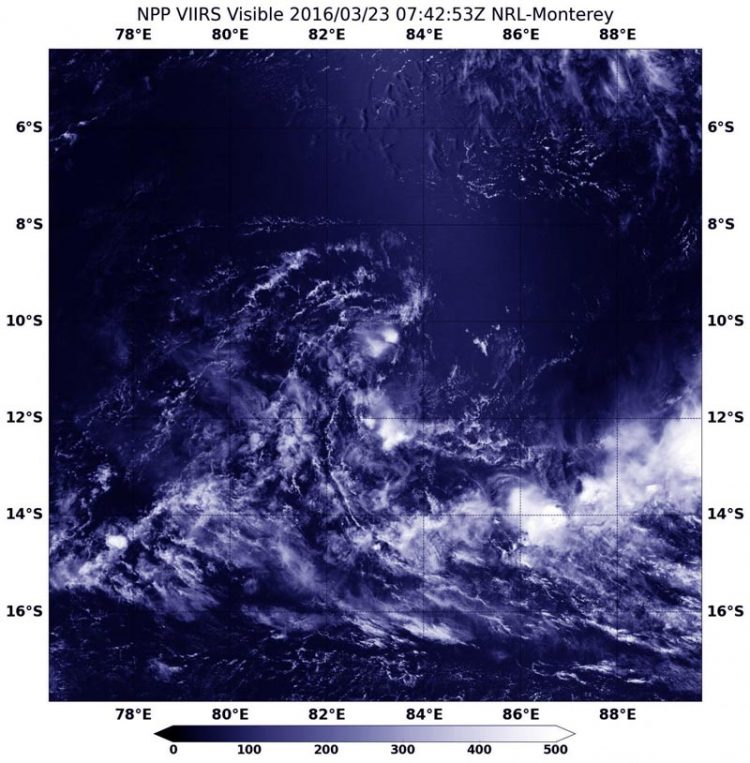Suomi NPP satellite spots ex-Tropical Cyclone Emeraude's remnants

On March 24 at 07:42 UTC (3:42 a.m. EDT), the VIIRS instrument aboard NASA-NOAA's Suomi NPP Credits: NASA Goddard Rapid Response/NOAA
On Mar. 24 at 07:42 UTC (3:42 a.m. EDT) the Visible Infrared Imaging Radiometer Suite (VIIRS) instrument aboard NASA-NOAA's Suomi NPP satellite captured a visible image of clouds associated with the remnant low pressure area. The poorly-defined center circulation was barely distinguishable in the imagery, although there were flaring thunderstorms occurring southwest of the center.
VIIRS collects visible and infrared imagery and global observations of land, atmosphere, cryosphere and oceans.
At 1800 UTC (2 p.m. EDT), the remnants of Emeraude were centered near 11.0 degrees south latitude and 85.9 degrees east longitude, about 650 nautical miles (748 miles/1,204 km) west of Cocos Island.
Maximum sustained surface winds were estimated at 20 to 25 knots (23.0 to 28.7 mph/37.0 to 46.3 kph) and the minimum sea level pressure was estimated to be near 1005 millibars.
The Joint Typhoon Warning Center noted that “upper level environment remains poor with weak divergence and strong vertical wind shear between 25 to 30 knots (28.7 to 34.5 mph/46.3 to 55.5 kph). Development is not expected over the next 24 to 48 hours, however, some dynamic models re-develop the system beyond two days.”
Media Contact
All latest news from the category: Earth Sciences
Earth Sciences (also referred to as Geosciences), which deals with basic issues surrounding our planet, plays a vital role in the area of energy and raw materials supply.
Earth Sciences comprises subjects such as geology, geography, geological informatics, paleontology, mineralogy, petrography, crystallography, geophysics, geodesy, glaciology, cartography, photogrammetry, meteorology and seismology, early-warning systems, earthquake research and polar research.
Newest articles

NASA: Mystery of life’s handedness deepens
The mystery of why life uses molecules with specific orientations has deepened with a NASA-funded discovery that RNA — a key molecule thought to have potentially held the instructions for…

What are the effects of historic lithium mining on water quality?
Study reveals low levels of common contaminants but high levels of other elements in waters associated with an abandoned lithium mine. Lithium ore and mining waste from a historic lithium…

Quantum-inspired design boosts efficiency of heat-to-electricity conversion
Rice engineers take unconventional route to improving thermophotovoltaic systems. Researchers at Rice University have found a new way to improve a key element of thermophotovoltaic (TPV) systems, which convert heat…



